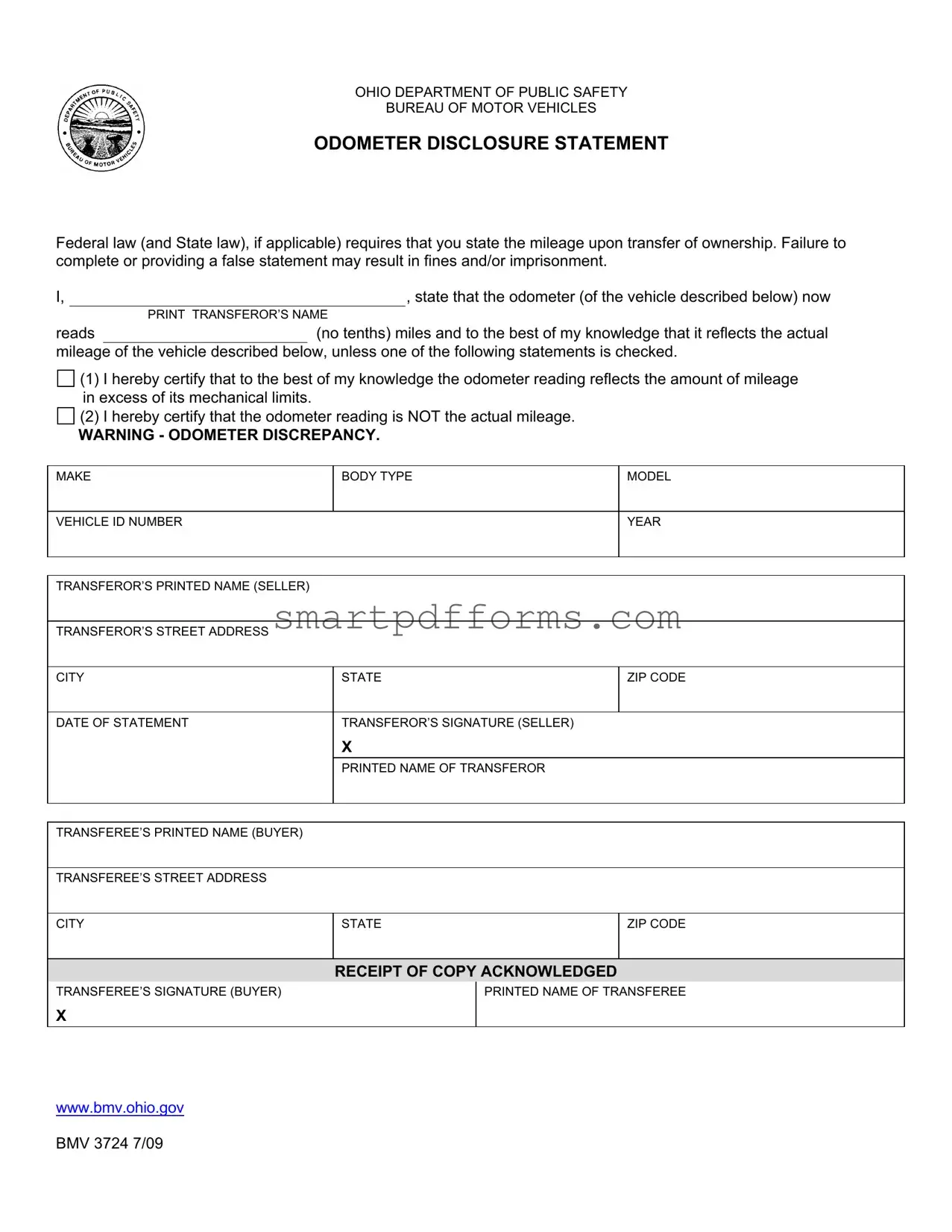Blank Ohio Department Of Public Safety PDF Template
The Ohio Department of Public Safety form, specifically the Odometer Disclosure Statement, serves a critical function in the vehicle ownership transfer process. This form is a federally and state-mandated document designed to ensure transparency in conveying a vehicle's mileage from the seller to the buyer, safeguarding against fraud. Failure to accurately complete the form can lead to penalties, including fines and imprisonment, underscoring its significance in maintaining trust in vehicle transactions.
If you're in the process of transferring a vehicle in Ohio, ensure the integrity of your transaction by accurately filling out the Odometer Disclosure Statement. Click the button below to complete your form.
Make This Document Now

